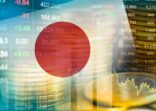With the launch of the new products, the number of L&I products has reached 36 out of the 80 ETFs listed on the exchange.
The passive products are Yuanta’s US Treasury 7-10 year Bond 2x Daily ETF, tracking the ICE US Treasury 1-10 Year Bond 2x Leveraged Index and the US Treasury 7-10 Year Bond Inverse 1x ETF, which tracks the ICE US Treasury 7-10 Year Bond 1x Inverse Index.
The underlying indices are based on the ICE US Treasury 7-10 Year Bond Index and reflect two times the positive single-day return and one time the negative return of the original index, respectively.
Constituents in the index include US dollar-denominated bonds having an outstanding par value of $300m, fixed interest rates and 7-10 years to maturity.
Five other L&I ETFs are expected to roll out this year if they receive approval from various regulators. The Taishin Securities Investment Trust’ ETF will track the MSCI Taiwan Short Daily Index and the MSCI Taiwan Leveraged 2x Daily Index, and more ETFs from Yuanta Securities that will track the S&P Japanese Yen Futures 2x Leverage Daily Index ER, the S&P Japanese Yen Futures 1x Inverse Daily Index ER and the S&P GSCI Gold 2x Leverage Daily Index ER.
Other L&I products launched this year, according to the TWSE, are two products from Cathay Securities Investment Trust: the Bloomberg Barclays US 20+ Year 2x ETF and the Bloomberg Barclays US Treasury 20+ Year Inverse 1x ETF, which were listed in April.
Fubon Asset Management also launched two: the Nasdaq-100 2x Leveraged Index ETF and the Nasdaq-100 -1x Inverse Index ETF which were listed in February.
L&I growth – and risk
L&I ETFs have become popular among Taiwanese investors as liquid and speculative tools, according to Ivan Han, Singapore-based senior analyst at Boston-headquartered research firm Cerulli Associates.
“The rapid growth can be attributed to fund managers who are rapidly developing new products and the regulator’s support for the growth of the ETF market,” he said.
L&I products, which were first launched in 2014, accounted for half of the total NT$293.7bn ($9.67bn) ETF market in Taiwan as of the end of May, Han said, citing Cerulli data.
In terms of popularity, L&I ETFs that invest in Taiwan’s domestic market have a slight edge in terms of AUM as compared to those that invest globally, but the difference is not large, he added.
Leveraged ETFs promise to deliver a daily return equivalent to a multiple of the underlying index return that they track. Inverse ETFs aim for a return that is the exact opposite performance of a certain index or benchmark.
Morningstar has warned about the substantial risks L&I products carry, saying they are for short-term bets.
“It is hard to overstate the risks of owning leveraged and inverse exchange-traded funds,” according to Morningstar. “These funds are designed for a one-day holding period, a horizon over which price movements are unpredictable.
“And (with the exception of single inverse ETFs) they amplify those movements. Over holding periods longer than one day, their performance can diverge sharply from what many investors might expect.”
Taiwan’s L&I ETF market (NT$bn)
|
L&I ETF |
AUM |
ETF market share |
|
Domestic L&I ETFs |
78.6 |
27% |
|
International L&I ETFs |
69.4 |
24% |
|
Total |
148.0 |
50% |
Source: Cerulli Associates. Data as of May 2017
In Taiwan, both Fubon Asset Management and Yuanta Securities manage the most number of L&I ETFs, TWSE records show.
Yuanta Securities is the only Taiwanese firm that made it in Asia’s top 10 ETF providers by AUM size, according to Morningstar data. As of the end of May, it managed around $6.9bn in ETF assets.
|
Manager |
Number of ETFs |
|
Fubon Asset Management |
12 |
|
Yuanta Securities Investment Trust |
10 |
|
Cathay Securities Investment Trust |
9 |
|
Fuh Hwa Securities Investment Trust |
2 |
|
Capital Investment Trust Corporation |
2 |
|
Mega International Investment Trust |
1 |
|
Total |
36 |
Source: Taiwan Stock Exchange
















